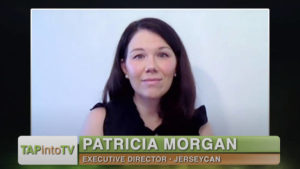Patrick McQuinn of Drew University has an important article in EducationNext that asks, “are advocacy organizations” – like Democrats for Education Reform, 50Can, Students First, Foundation for Excellence in Education – “changing the politics of education?” The short answer, is “yes,” in spite of historical and overwhelming opposition from teacher unions and other organizations committed to maintaining the education establishment.
McQuinn notes that the ERAO’s (education reform advocacy organizations) tend to be bipartisan, but integration with the Democratic Party is particularly complicated.
First, the Democratic Party is divided over school reform—particularly on school choice, test-based accountability, and teacher quality. One of the most important and unresolved issues is how the groups will navigate their complicated relationship with civil rights organizations and teachers unions. Teachers unions are a crucial part of the Democratic Party’s base and yet have long been resistant to the kinds of reforms the ERAOs are advocating. But the unions themselves are also in flux. Harvard’s Susan Moore Johnson has noted the rise of “reform unionism”: support for reform is increasing inside the unions, particularly in the American Federation of Teachers (AFT) and among younger teachers. This trend has spawned such pro-reform teacher organizations as Teach Plus and Educators 4 Excellence.
Civil rights groups also have complex relationships with ERAO’s. The NAACP, for example, has “historically been closely aligned politically with the teachers unions and continue to find common ground given the large number of minority teachers, particularly in urban areas.” In Jersey, think of the umbrella group called the Coalition for Effective Newark Public Schools, which includes the Newark Teachers Union, the Newark Supervisors and Administrators union, Abbott Leadership Institute, the NAACP-Newark Chapter, and the Education Law Center.
Like teacher unions, civil rights groups are committed to protecting the interests of their own (adult) members, and sometimes that clashes with child-centered education goals. McQuinn notes,
This helps to explain why the NAACP sided with the unions against school closures and charter school expansion in New York City and Newark, for example, even as the group supports the ERAOs’ call for closing achievement gaps. There is also a major generational and racial gap between the leaders of groups like the NAACP and ERAO leaders, who are an overwhelmingly young, elite-schooled, and “white” bunch and as such are often viewed skeptically by people of color. Figuring out how to create state-level alliances with civil rights groups and mobilize urban communities—which are disproportionately minority and poor—remains an ongoing challenge.



